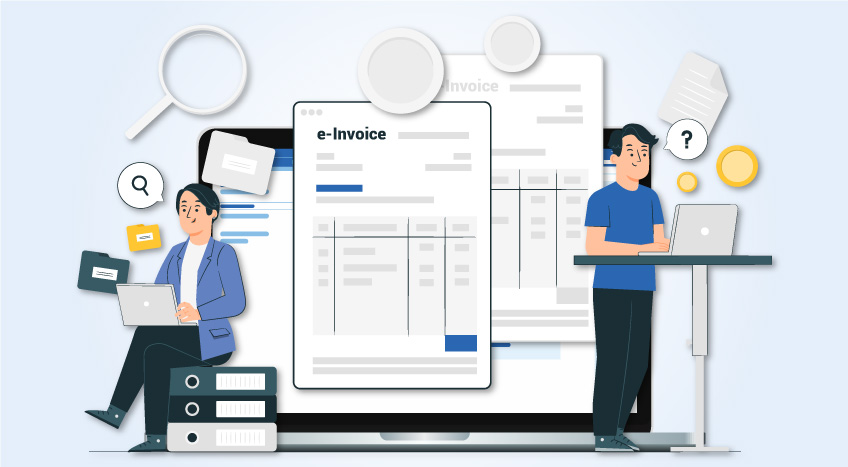With VAT in Oman, the supply of taxable goods and services will attract 5% VAT. The responsibility to levy and remit the VAT amount to the authorities is on businesses. While 5% VAT needs to be collected, the question remains: What will be the value on which VAT needs to be levied?
This is crucial because, If goods and services are undervalued, it leads to short tax payments, leading to non-compliance. On the other hand, overvaluation will result in loss of revenue for businesses by way of additional taxes and, ultimately, higher buying costs to customers.
To avoid the situations mentioned above, specific guidelines are detailed in VAT law that help you determine supply value. Let us understand the value of supply in Oman VAT.
Value of supply in Oman
The value of supply, also called taxable value, can be defined as the total value of the consideration excluding the VAT. The consideration includes all expenses, any fees or taxes due as a result of the supply, charged by the taxable supplier to the customer. Any deductions, subsidies, grants or amounts determined by the regulations are excluded from the value of supply.
In simple words, the supply value will be sale value, including all other expenses such as packing charges, installation fee, etc., but excludes any deduction such as discounts, subsidies, etc.
| How to File Oman VAT Return? | Place of Supply of Goods under Oman VAT |
The below table makes it easy to know the components that need to be excluded or excluded.
|
Components of Supply Value |
Treatment |
|
+ Full value of consideration excluding VAT |
Include |
|
+ expenses such as packaging, transportation etc. |
Include |
|
+ Other fees |
Include |
|
+ any other taxes other than VAT |
Include |
|
(-) any deductions |
Exclude |
|
(-) subsides |
Exclude |
|
(-) Grants |
Exclude |
|
(-) any deductions as prescribed in regulations |
Exclude |
Value of supply example
A-One Spares Ltd sells spare parts worth Rs 100,000, including packing charges of 500 to Abdul Traders. A-One Spares also provide a discount 250 OMR.
|
Spare Parts |
100,000 |
|
Packaging Charges |
750 |
|
Discount |
250 |
In the above case, the supply value will be the total consideration (before VAT), including additional charges towards packing charges less discount amount. The value of supply will be 100,500 (Spare Parts 100,000 + Packing Charges 750 – Discount 250). The 5% VAT will be calculated on 100,500, i.e. 5025.
Value of supply in case of inclusive of VAT
In the above example, the supply value was exclusive of tax, and it was relatively easier to determine the value. How to determine if the value is inclusive of tax?
It is pretty simple. You just need to reduce the VAT amount from the total consideration (inclusive value). To do that, use the below formula:
VAT Amount = Total Consideration * 5 (Rate of VAT) / (100 + 5% VAT)
The VAT amount arrived using the formula above should be reduced from the total consideration.
Let’s apply this formula to considering the above example of A-One Spares.
Total consideration, including VAT is 105,525
To arrive at the value of supply, you need to reduce the VAT from 105,525 as calculated below:
105,525 * 5 /105 = 5,025
Now, reduce 5.025 from total consideration to arrive at the taxable value of supply. This will be useful when you receive the invoice from your supplier with inclusive of VAT value.
Given the different nature of supplies such as deemed supply, exports, imports, etc., separate guidelines are prescribed in VAT law and regulations. It’s essential to apply a suitable method to determine the value to avoid any non-compliance arising from it. One way to eliminate this risk is to use VAT software that automates the calculation.
TallyPrime, a business management software, now fully supports VAT compliance in Oman. The inbuilt intelligence of TallyPrime ensures accurate calculation considering the nature of supply you are making. The best part is that the built-in ‘Prevention, Detection and correction’ capability ensure invoicing to return filing is accurate.
Stay tuned for more blogs covering different types of supplies and methods to determine the value of supplies.
Read more on Oman VAT
Oman VAT, VAT Invoice in Oman, Best VAT Software in Oman, Input VAT Deduction in Oman, Exempt Supplies in Oman VAT, How to Calculate VAT in Oman, What is VAT and How does it work, What are the Benefits of Applying VAT in Oman, Place of Supply of Services under Oman VAT, Place of Supply of Goods under Oman VAT, Time of Supply in Oman VAT
VAT Rate
VAT Rate in Oman, Zero-Rated supplies in Oman VAT, Food Items Subject to Zero-rate VAT in Oman
VAT Registration
VAT Registration Guide in Oman, VAT Registration Deadline in Oman, Who Should Register Under Oman VAT, Business Benefits of Voluntary VAT Registration, Oman VAT Registration Guide for Persons with CRN, What is Tax Group Registration in Oman VAT
VAT Return
VAT Return in Oman, Oman VAT Return Format, FAQs on Oman VAT Return, How to File Oman VAT Return









